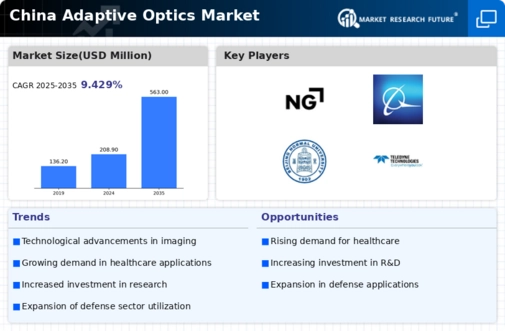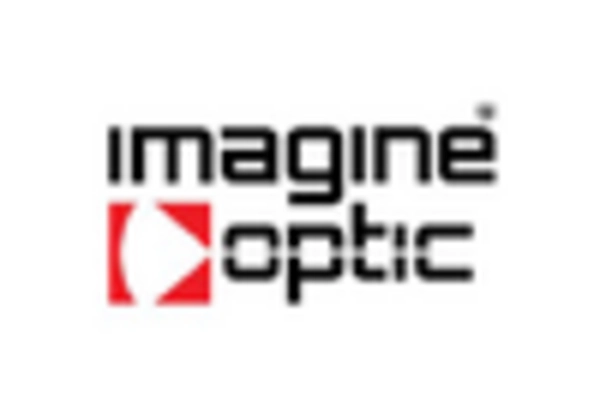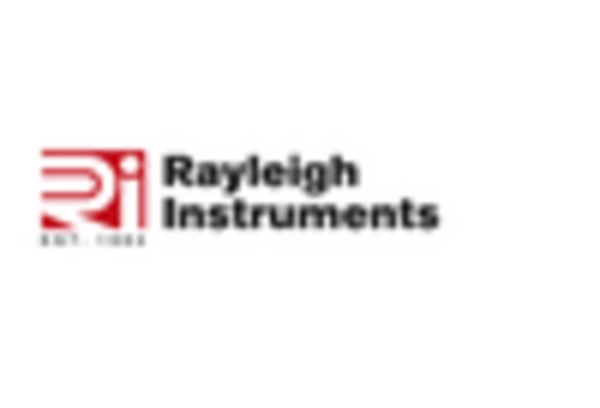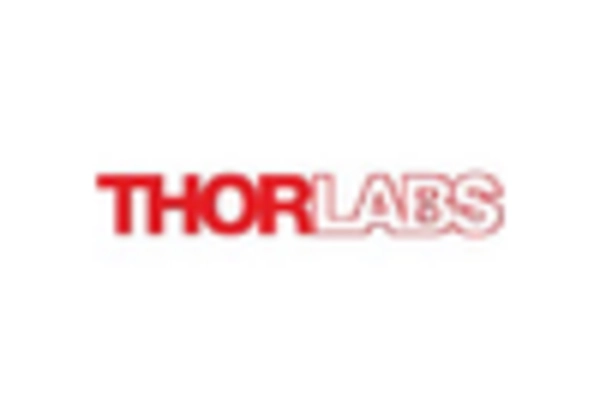Increased Defense Spending
China's defense sector is witnessing a notable increase in spending, which is positively impacting the adaptive optics market. The military applications of adaptive optics, particularly in surveillance and reconnaissance, are becoming increasingly critical. In 2025, defense expenditures are projected to reach $250 billion, with a significant portion allocated to advanced optical systems. This trend suggests a growing recognition of the importance of high-resolution imaging capabilities in defense operations. Consequently, the adaptive optics market is likely to see heightened demand for systems that can enhance situational awareness and target acquisition, thereby driving growth in this segment.
Rising Research Initiatives
The adaptive optics market in China is experiencing a surge in research initiatives, particularly in the fields of astronomy and biomedical imaging. Government funding and academic partnerships are fostering innovation, leading to the development of advanced adaptive optics systems. In 2025, the Chinese government allocated approximately $500 million to support research in optical technologies, which is expected to enhance the capabilities of adaptive optics systems. This influx of resources is likely to drive the market forward, as new applications emerge and existing technologies are refined. The adaptive optics market is thus positioned to benefit from these research initiatives, potentially leading to breakthroughs that could redefine imaging quality and precision.
Growing Interest in Astronomy
China's growing interest in astronomy is driving demand for advanced optical systems, particularly adaptive optics. The establishment of new observatories and research institutions is fostering a culture of astronomical exploration. In 2025, investments in astronomical research are projected to exceed $300 million, with a focus on enhancing imaging capabilities through adaptive optics. This trend indicates a commitment to advancing scientific knowledge and improving observational techniques. The adaptive optics market stands to gain significantly from this interest, as researchers and institutions seek to acquire cutting-edge technologies that can provide clearer and more detailed images of celestial phenomena.
Expansion of Telecommunications
The telecommunications sector in China is rapidly evolving, with a strong emphasis on enhancing network capabilities. The adaptive optics market is poised to benefit from this expansion, particularly in the development of high-speed optical communication systems. As of 2025, the Chinese telecommunications market is expected to reach $200 billion, with a significant focus on integrating adaptive optics technologies to improve signal quality and transmission efficiency. This integration may lead to more reliable communication networks, which are essential for both commercial and governmental applications. The adaptive optics market is thus likely to experience growth as telecommunications companies seek to leverage these technologies for competitive advantage.
Technological Integration in Healthcare
The integration of adaptive optics technologies in healthcare is becoming increasingly prominent in China. With a focus on improving diagnostic imaging and treatment methods, the adaptive optics market is witnessing a rise in applications within ophthalmology and other medical fields. In 2025, the healthcare sector is expected to invest approximately $150 million in advanced imaging technologies, including adaptive optics systems. This investment reflects a broader trend towards precision medicine and enhanced patient care. The adaptive optics market is likely to benefit from this integration, as healthcare providers seek to adopt innovative solutions that can improve diagnostic accuracy and treatment outcomes.

















Leave a Comment